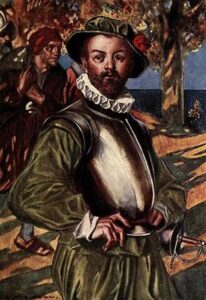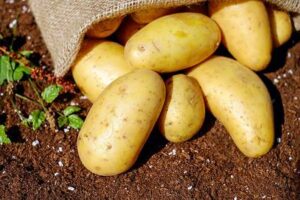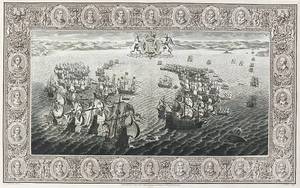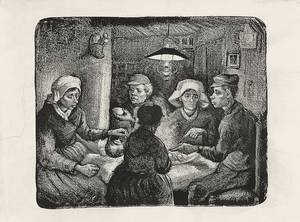Who introduced the potato to England?
Date post added: 26th October 2023
Can you imagine a world without a humble spud? Whether you eat it roasted, boiled, mashed, baked or fried, the potato is a staple food in our diets. But prior to the 16th century, Europeans were living potato-free lives.
If you recall your history lessons at school, you’ll probably remember the potato being produced for Queen Elizabeth by Sir Walter Raleigh. Or was it Sir Francis Drake? Let’s peel back the layers of the potato’s story, and explore how and why the potato was introduced to England, and importantly, by whom.
The early history of the potato
It’s hard to imagine a time when the now commonplace potato wasn’t found on British or Irish soil. But it was first discovered growing in mountainous areas of South America around 10,000 years ago. There’s evidence that potatoes were growing in Peru in the pre-Inca era – ancient painted pottery depicts the vegetable. From Peru, the versatile and nutritious potato gained popularity and was grown across the Andes and into other areas of South America like Bolivia, Ecuador and Chile.
The Incas learned to utilise the robust crop in various ways – boiling, mashing and baking potatoes as we do today. But the Incas didn’t just use the potato as food. They believed that it had medicinal properties, using it to heal injuries and aid with childbirth.
What’s the the role of Spain in bringing potatoes to Europe?
In 1532, Spanish sailors invaded the Andean region. The Spaniards were looking for gold and silver, but discovered spuds whilst digging and saw locals eating the strange tuber. Their initial scepticism of the potato crop soon subsided when they realised it kept them satisfied, strong and healthy. It also travelled well and stores of potatoes were transported back from South America to Spain in the 1570s.
It was initially greeted with suspicion in Europe and only used as animal feed. Slowly, European people began to recognise the benefits of the South American potato crop. It was a pretty hardy plant, and the potato provided substantial food for workers which made them more productive.
Frederick the Great of Russia was a fan of the tuber and insisted on it being planted on a grand scale. The French Queen Marie Antoinette fashioned the potato flower into a hair accessory, whilst her husband King Louis XVI wore them in his lapel.
France, Germany, Italy and other countries across Europe had suffered devastating famines when crops like wheat and barley had failed. The hardy potato provided an alternative solution for farmers and working populations alike. The answer to European people’s prayers had arrived in the form of the spud.
How was the potato introduced to England?
The person to introduce the potato to England is the subject of debate. The credit for the introduction of the potato to Britain has been attributed to Sir Francis Drake, Sir Walter Raleigh, Sir Thomas Harriot and Sir John Hawkins.

Sir Walter Raleigh
One story says that Sir Walter Raleigh introduced the potato to England on his return from Virginia in North America. Raleigh presented specimens of the crop to Queen Elizabeth I – a gift of spuds to accompany the new colony he’d acquired for her. However, it could also have been his shipmate/ employee, Sir Thomas Harriot who was the first one past the post with the potato. Either way, Sir Walter Raleigh did take the crop across the Irish Sea and planted the potato on his estate in Youghall near Cork in 1586.

Sir Francis Drake
Sir Francis Drake circumnavigated the high seas during his 1586 voyage to America. He returned with goodies for the Queen, including tobacco and potatoes. Some believe it was swag swiped from Spanish ships. The Spanish were clearly back in Europe with the spud booty a good decade before Drake and they had a big headstart on potato cultivation. Strangely, Sir Francis Drake had a monument in Offenburg, Germany which credited him as the introducer of potatoes to Europe.

Sir John Hawkins
Sir John Hawkins was another naval commandeer and he’s credited with transporting potatoes back in 1564. The likelihood is that these were Venezuelan sweet potatoes rather then the new-fangled potato crop. You may think that the sweet potato is a relatively recent addition to our diets, but it actually predates the ‘regular’ potato and was seen as a delicacy eaten by wealthy and royal families only in these times.
In 1597, Herbal scientist, John Gerard refers to potatoes in his Herball (a kind of plant catalogue) as “The Potatoes of Virginia”. Does that make him Team Raleigh rather than Team Drake? But he referred to them as ‘papus’ which is the Indian name for potatoes and also the vernacular term used in the South American Andes. So, again, we’re back to the Spanish origins.
What did the people in England first think of potatoes?
It took a while for the potato to become staple food across England and, also, across classes. The rich were open to the new vegetable. The working classes greeted the spud with disdain and it wasn’t until the late 18th century that perceptions began to change with the help of promotional campaigns by the English government.
By the 19th century, there was a definite change in the English diet. Previously, it had been largely meat-based with some bread, butter and cheese. And then along came the potato which provided a nutritious and convenient solution for working people. Before long, potatoes became a type of street food with vendors selling hot potatoes across London. By the second half of the 19th century, the notion of fried potato had become popular and so came the national delight that is fish and chips.
The highs and lows of potato growing in Ireland
When the potato was introduced to Ireland back in the 16th century, it found its happy place. Irish soil and weather was a great match for the potato plant. By the end of the 18th century, 40% of Ireland’s population ate nothing but potatoes. Even today, you’ll find potatoes served with most meals.
But in the 19th century, a potato blight ruined potato crops across Europe. Ireland was hit exceptionally hard by the initial potato blight in 1845, and it recurred for the next seven years annihilating potato harvests. This potato famine was devastating for Ireland’s population who had come to rely on potato harvests for their main food source.
Whilst Britain still suffers from adverse weather conditions that affect our potato crops, we produce around 5 million metric tonnes per year. So we owe a huge thank you to the person responsible for the introduction of the potato to England whether it was Raleigh, Drake, their fellow seamen or someone else entirely.
If you love discovering the history of foods in England, you should take a London food walk. Choose the Epicurean, Gourmet’s, Foodies’ London and explore the history of unique street foods like jellied eels and hot sheep’s feet, and of course the history and transformation of the humble potato. Our experienced guide, Ann, is full of fascinating foodie stories and will happily satisfy your curiosity about English cuisine.





